Arahantship and Nibbāna: The Path to Enlightenment and the Cessation of Suffering
Enlightenment, or Arahantship, is the ultimate goal of Buddhist practice. It is the state of complete liberation from suffering and the cycle of rebirth. In this book, we will explore the path to enlightenment and the various practices and teachings that lead to it.
Becoming an Arahant
To become an Arahant, one must first understand the nature of suffering and its causes. This is where the Four Noble Truths come in.

The Four Noble Truths
- The truth of suffering (dukkha)
- The truth of the cause of suffering (samudaya)
- The truth of the cessation of suffering (nirodha)
- The truth of the path leading to the cessation of suffering (magga)
By understanding these truths, one can begin to see the impermanence and unsatisfactoriness of all things, and the need to seek liberation from the cycle of rebirth.
The Three Marks of Existence
To further understand the nature of suffering, one must also understand the Three Marks of Existence.
- Impermanence (anicca)
- Non-self (anatta)
- Suffering (dukkha)
By understanding these marks, one can begin to see the impermanence and emptiness of all things, and the need to let go of attachments and desires.

The Five Aggregates (Skandhas)
The Five Aggregates, or Skandhas, are the components that make up a being.
- Form (rupa)
- Sensation (vedana)
- Perception (sanna)
- Mental formations (sankhara)
- Consciousness (vinnana)
By understanding the nature of these aggregates and their impermanence, one can begin to see the illusory nature of the self.

Cause and Effect
Cause and effect, or karma, is the concept that all actions have consequences.
By understanding the nature of karma and the interdependent nature of all things, one can begin to take responsibility for their actions and strive to act in a way that leads to positive outcomes.
Dependent Origination
Dependent Origination, or Paticca Samuppada, is the concept that all things arise in dependence upon causes and conditions.
By understanding the nature of dependent origination, one can begin to see the interdependent nature of all things and the need to break the cycle of suffering by uprooting the causes of suffering.

Dhyāna
Dhyāna, or meditation, is a key practice in Buddhism. By cultivating concentration and mindfulness, one can begin to see the nature of reality and develop insight into the true nature of the self and the world around us.
The 40 Vipassanā Practices
The 40 Vipassanā practices are a set of contemplations that help to cultivate insight into the nature of reality.
By practicing these contemplations, one can begin to see the true nature of phenomena and develop wisdom and understanding.
The Four Sathipatāna
The Four Sathipatāna, or foundations of mindfulness, are a set of practices that help to cultivate mindfulness and awareness. By practicing these foundations, one can develop the ability to see the nature of reality as it truly is.

The 16 Anapanasati Practices of Mindfulness of Breathing
The 16 Anapanasati practices of mindfulness of breathing are a set of practices that help to cultivate mindfulness and concentration. By practicing these practices, one can develop a deep awareness of the breath and the body, and begin to cultivate a sense of calm and inner peace. The 16 practices are divided into four stages, each of which is designed to develop a specific aspect of mindfulness and concentration.
First stage
In the first stage, the practitioner focuses on the physical sensations of the breath. The aim is to become aware of the breath as it enters and leaves the body, and to focus on the sensations of the breath as it moves through the nose, throat, chest, and abdomen.
Second stage
In the second stage, the focus shifts to the mental aspect of the breath. The practitioner observes the breath as a mental object and aims to develop a clear awareness of the breath, without getting lost in thoughts, emotions, or distractions.
Third stage
In the third stage, the practitioner develops a deeper awareness of the relationship between the breath and the body. The aim is to observe the breath and the body as a unified whole, and to develop a sense of ease and relaxation in the body.
Fourth stage
In the fourth stage, the focus shifts to the development of insight into the nature of the mind and the body. The aim is to observe the breath and the mind as they arise and pass away, and to develop a clear understanding of the impermanence and non-self nature of all phenomena.
Through the practice of these 16 Anapanasati practices of mindfulness of breathing, the practitioner can develop a deep and stable concentration, and cultivate the wisdom and insight necessary to attain Arahantship and Nibbāna.

Dependent Origination
Dependent origination is a fundamental teaching in Buddhism that explains the causes and conditions that give rise to suffering and the path to liberation. Dependent origination describes how all phenomena arise in dependence upon other phenomena, and how this interconnectedness gives rise to the cycle of birth and death.
Dependent origination is often depicted as a chain of 12 links, each of which represents a different aspect of the process of becoming and rebirth. The links are:
- Ignorance (avijjā)
- Volitional formations (saṅkhāra)
- Consciousness (viññāṇa)
- Name and form (nāmarūpa)
- Six sense bases (saḷāyatana)
- Contact (phassa)
- Feeling (vedanā)
- Craving (taṇhā)
- Clinging (upādāna)
- Becoming (bhava)
- Birth (jāti)
- Aging and death (jarāmaraṇa)
Each link in the chain is dependent upon the previous link and gives rise to the next link in turn. The first link, ignorance, is the root cause of the entire process of becoming and rebirth, and the aim of Buddhist practice is to uproot this ignorance and attain the freedom of Nibbāna.
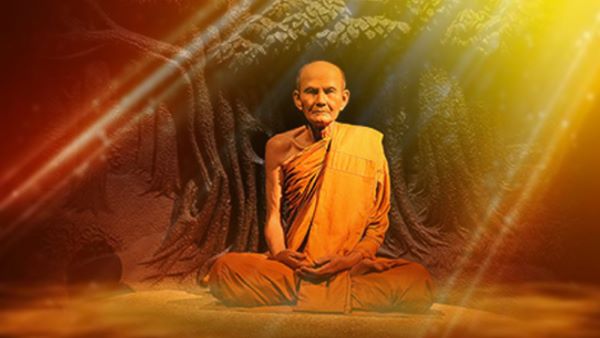
The Vipassana Kammathāna Thai Forest Monks’ Tradition
The Vipassana Kammathāna Thai Forest Monks’ Tradition is a lineage of Theravada Buddhism that emphasizes the practice of mindfulness and insight meditation. This tradition is known for its rigorous and austere approach to practice, and its emphasis on the direct experience of the Dhamma.
Origins of the Tradition
The Vipassana Kammathāna Thai Forest Monks’ Tradition traces its origins back to the forest meditation masters of Thailand, such as Luang Pu Mun Bhuridatta Thera and Ajahn Chah. This tradition emphasizes the importance of meditation practice in the cultivation of wisdom and insight, and places great emphasis on the practice of mindfulness in daily life.

Continuing the Tradition
Today, the Vipassana Kammathāna Thai Forest Monks’ tradition continues to thrive with many monasteries and meditation centers throughout Thailand, and around the world. The teachings and practices of this tradition have had a profound impact on the lives of countless individuals, both monastic and lay.
-

Vipassana – A Complete Guide to Applied Practice
฿0.00 Get Free -

Deceptive Chat: Hacking LLMs – Using Natural Language to talk A.I. in Circles By Ajarn Spencer Littlewood
฿99.00 Add to cart -

AI Personality: Inherited Conditioning and Human Influence
฿0.00 Add to cart -
Sale!
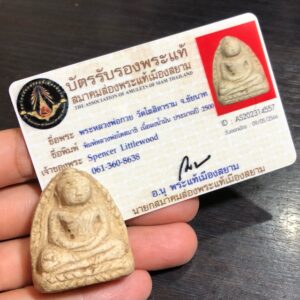
Pra Luang Por Toh Luang Por Guay 2500 Nuea Pong Nam Man
Original price was: ฿6,000.00.฿3,600.00Current price is: ฿3,600.00. Add to cart -
Sale!
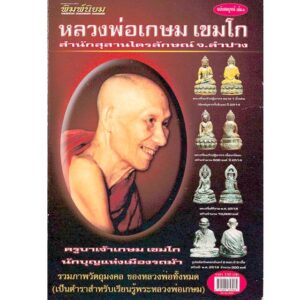
Amulets of Luang Por Kasem Khemago Susaan Pra Trailaks
Original price was: ฿200.00.฿150.00Current price is: ฿150.00. Add to cart -

The 15 Minute City
฿0.00 Add to cart -
Sale!

Free Assassin’s Creed HD Wallpapers
Original price was: ฿100.00.฿0.00Current price is: ฿0.00. Add to cart -

Blessed Photo Ajarn Tiang Sak Yant Lay Master
฿2,999.00 – ฿3,149.00 Select options This product has multiple variants. The options may be chosen on the product page -
Sale!

Pra Roop Lor LP Ngern Wat Bang Klan Nuea Nga Silver Casing
Original price was: ฿8,000.00.฿5,000.00Current price is: ฿5,000.00. Read more -
Sale!
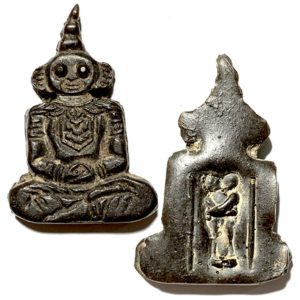
Phra Ngan Mai Payung Dam with Takrut & In Koo Ancient Carved Wood Lanna Amulet
Original price was: ฿6,000.00.฿3,300.00Current price is: ฿3,300.00. Select options This product has multiple variants. The options may be chosen on the product page -

Pra Rahu Ancient Lanna Amulet Nuea Pong Jum Rak Unknown Kruba Free Express Shipping
฿5,000.00 Select options This product has multiple variants. The options may be chosen on the product page -
Sale!

Phra Rahu Nuea Pong Kala Kluk Rak Old Lanna Amulet Unknown Kruba of Lanna Origin
Original price was: ฿9,500.00.฿3,800.00Current price is: ฿3,800.00. Select options This product has multiple variants. The options may be chosen on the product page -
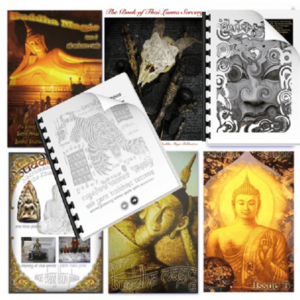
Sak Yant Ebook and 6 Buddha Magic Issues
฿2,500.00 Add to cart -

Sacred Lion Amulet of Ajarn Bua 2519 BE
฿2,430.00 Add to Cart -
Sale!
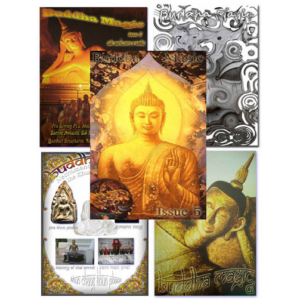
Buddha Magic Ebook Compendium First 5 Issues
Original price was: ฿1,650.00.฿1,300.00Current price is: ฿1,300.00. Add to cart
One of the most prominent figures in this tradition was Luang Por Chah, who was known for his simple and direct style of teaching. His teachings emphasized the importance of mindfulness and meditation in everyday life, and he encouraged his students to develop a deep understanding of the nature of the mind and the body.
Spreading the Teachings
Luang Por Chah’s teachings were carried on by many of his Western ordained students, including Ajahn Sumedho, Thanissaro Bhikkhu, and Ajahn Amaro. These teachers have continued to spread the teachings of the Thai Forest tradition to the West, and have established many meditation centers and monasteries throughout Europe and North America.

Emphasis on Mindfulness, Concentration, and Insight
The Vipassana Kammathāna Thai Forest tradition, is one of the last remaining traditions of practice, that remains true to the original practices of the monks who practiced in the times of the Buddha. It is a tradition that places a strong emphasis on mindfulness, concentration, and insight, and has helped many individuals to cultivate a deep understanding of the nature of the mind and the body, and to experience the freedom and peace that comes with enlightenment.
To summarize, the path to Arahantship and Nibbāna is a profound and transformative journey, that requires dedication, perseverance, and a deep commitment to the teachings and practices of the Buddha. By following the Noble Eightfold Path and cultivating mindfulness, concentration, and insight, one can free oneself from the cycle of suffering and experience the true peace and happiness that comes with enlightenment.

Acknowledgments
I offer my sincerest gratitude to the Triple Gem and all those who have contributed to the development of the Buddha’s teachings throughout history. I also ask for forgiveness for any unintentional mistakes or errors which may have occured in this article (if any). May all beings be free from suffering and experience true peace and happiness.
Sincerely,
